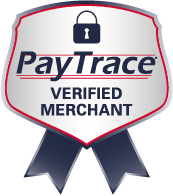 Facebook may have the reputation when it comes to engaging online consumers, but YouTube has hit back hard with new data suggesting its brand engagement trumps the world’s most popular social network. Consumer engagement is one of the greatest values of social marketing, not to mention digital marketing as a whole, and the ability to connect with consumers through content is often the top goal of these campaigns.
Facebook may have the reputation when it comes to engaging online consumers, but YouTube has hit back hard with new data suggesting its brand engagement trumps the world’s most popular social network. Consumer engagement is one of the greatest values of social marketing, not to mention digital marketing as a whole, and the ability to connect with consumers through content is often the top goal of these campaigns.
Marketers understand the impact video content can have in connecting with consumers, stirring up product appeal and driving conversions. But the challenge is often gaining mass exposure for any given piece of video content–or at least that’s been the perception. But as organic reach on Facebook continues to dwindle–with the network hinting that “organic” exposure may be killed off in the near future–YouTube is proving a more formidable competitor, and a powerful opportunity for brands looking to engage consumers online. Here’s a quick breakdown of how video is shaping online consumption.
How Facebook’s Long-Term Revenue Goals Create an Opportunity
 If you’re a brand that isn’t investing heavily into paid advertising, the value of Facebook is quietly diminishing. Facebook has gradually been reducing the percentage of online followers that see any given post from a brand page. So if you have 50,000 followers for your brand on Facebook, this means you’re only reaching 3,000 followers with each post you make–assuming you aren’t paying to promote the post.
If you’re a brand that isn’t investing heavily into paid advertising, the value of Facebook is quietly diminishing. Facebook has gradually been reducing the percentage of online followers that see any given post from a brand page. So if you have 50,000 followers for your brand on Facebook, this means you’re only reaching 3,000 followers with each post you make–assuming you aren’t paying to promote the post.
It’s widely believed that Facebook will soon eliminate all organic reach for brands in the near future, meaning your Facebook posts won’t appear in any consumer news feeds unless you pay to promote your brand. YouTube, meanwhile, features no paywalls to block your organic reach. While it’s generally seen as a video aggregator more than a social network, YouTube still features user accounts where consumers can subscribe to content and establish their own video news feed.
Many consumers have already done this, and the results are profound: According to recent data from YouTube, the video website offers 20 times the consumer engagement levels that Facebook offers organically. Not only is video more valuable on a per-consumer basis, but engagement is higher. And, because you can promote videos on Facebook, you’re not taking anything away from your marketing efforts on other social networks.
Building Successful YouTube Campaigns
For companies looking to leverage YouTube for improved performance in consumer engagement, several strategies can be employed. In fact, Google has recently been more transparent about which best practices produce the greatest results on YouTube. As is the case with most types of content, originality is key: Content must be appreciated as a standalone product if brands want to use it to drive consumer engagement. Whether the content is crafted for humor, drama, or informative purposes, it needs to be high-quality and useful in its own right.
When brands find a content strategy that works, those companies should work to serialize their videos. Serial content works wonders on YouTube because consumers can subscribe to the entire series if they like one video. Thus, a 20-video series can reach consumers many more times than 20 separate videos ever could. Even though some of the viewership will be repeat traffic, the video consumption still serves to strengthen brand familiarity and loyalty, increasing the odds of a conversion.
Finally, YouTube videos are easily embedded onto other sites, and they should be to maximize exposure. Embed these videos on your company website, in blog posts, and on social media to expand your viewership and drive brand exposure toward viral heights.
Because these video content insights are relatively new, businesses have a prime opportunity to strike while the iron is hot. If you’re ready to improve your brand’s video marketing efforts, contact DBC Digital today to start developing your video strategy.



